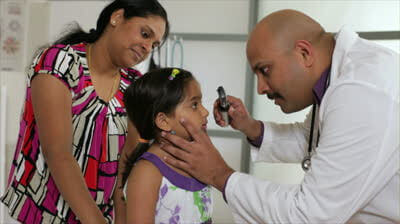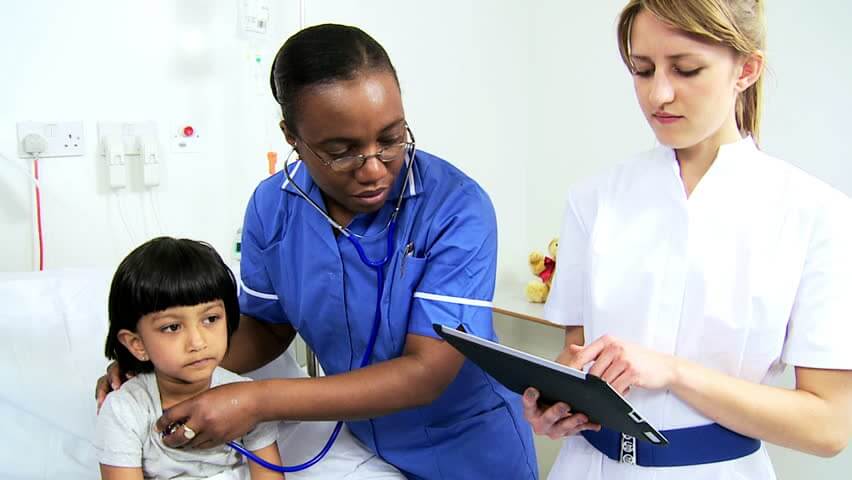
Some visits to the doctor go better than others – everything runs smoothly, all your questions are answered and you leave feeling confident about the next steps. Sometimes, the opposite happens – you wait for an hour, you feel rushed and on the drive back home you remember something that you forgot to ask about. And you are not sure whether or not you really agreed to that test.
Is there anything you, the patient or caregiver, can do to make sure that every visit to the doctor goes smoothly? As a Pediatrician, I see babies, children and teenagers daily in my clinic. Here are a few tips on how you can make the most out of your child’s, or even your own, appointment with the doctor:
1. Call ahead to see if your doctor is running on time, and arrive 10-15 minutes before your appointment.
I hate running late in my clinic. Every doctor I know hates running late. I know parents are waiting with their young children and kids get hungry and cranky. I know people have busy days and other appointments to get to. I do everything I can to make sure that I see each patient at their scheduled time, but often being late is unavoidable.
I run late because I don’t like to interrupt my patients. They have a lot on their minds. I might be the only person they can talk to, so I try not to interrupt. Or, there is something important to discuss that neither I nor my patient want to put off for our next meeting.
Sometimes I run late because my previous patient arrived late and I didn’t want to tell them to pack up the baby, go home and come back tomorrow. So I see them and I am late for the rest of the day. You should aim to arrive 10-15 minutes before your appointment, and up to 30 minutes ahead if your appointment is in a hospital or very large clinic. Children need to be weighed and measured before the appointment. The younger the child and the colder the weather, the longer this takes. It also takes time for little ones to get comfortable in the office. If you arrive exactly at your stated appointment time, these tasks will use up your slot with the doctor.
 2. One person, one appointment.
2. One person, one appointment.
I can’t tell you the number of times I’ve been asked to see another child that’s just been "brought along" for the visit. Sometimes I don’t mind, but usually I refuse because I know it’s going to make me late (see the first point above).
If you have more than one child or family member that needs to be seen by the doctor, let the secretary know and make a separate appointment for each one. Each individual deserves a full and complete assessment - squeezing two or three children into one appointment slot is not fair to you or your child.
3. Before your visit, make a list of the topics that you would like to discuss at the appointment.
Share your list with your physician at the start of the appointment. You and your physician may have to negotiate which topics can be covered at the visit - some may be very complicated and need another appointment to fully address, or something at the bottom of your list may be extremely important and your physician may want to discuss it immediately.
If you know you have several issues to discuss, ask the secretary at the time of booking if you could book a longer appointment. Many physicians are flexible on this – my appointments for children with school or behavioural problems, for example, are sometimes an hour or more.
 4. Bring the "right people" and the "right documents" to the appointment.
4. Bring the "right people" and the "right documents" to the appointment.
If other caregivers (for example grandma or a nanny) are taking your child to the doctor, make sure they have the right information. It is a frustrating experience to ask about symptoms and medical history from someone who does not know the patient very well. Write down your concerns, a brief note on your child's medical history and relevant details on what has been happening recently, and have them take it to the appointment. Perhaps you could even call in when they are with the doctor.
Also, be organized with your health, especially if you or your child has a chronic disease (e.g. asthma, seizures) or complex condition. Bring hospital records, immunization (vaccine) records and medication bottles to each visit.
If you are seeing your doctor regarding a school problem for your child, bring in report cards from the past few years, letters from the teacher, communication books etc.
Having the right documents and medication at the appointment allows clear communication and decreases the chance of error and guesswork. Many patients do not know the name of the medication they are taking – if you are returning to the same doctor who prescribed the medication, this is not a problem. But if the medication was prescribed by a different physician, it is very difficult for your doctor to guess what it might be based on descriptions of the colour or pill shape. Many medications also have similar sounding names, so the best thing to do is bring the bottle.
5. A picture (or video) is worth a 1000 words.
If there’s something you need your doctor to see (a rash, an odd movement that your baby makes, etc.) use technology, take a picture or video and bring it with you to the appointment. Having an image can be invaluable in these and many other situations.
If you have more tips to share leave them in the comments below!
Related articles: Mr. Rajalingam’s Prostate The New Face of Family Medicine Let’s Talk About Mental Health

























